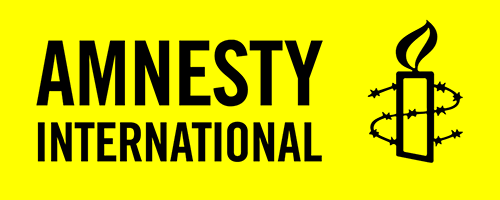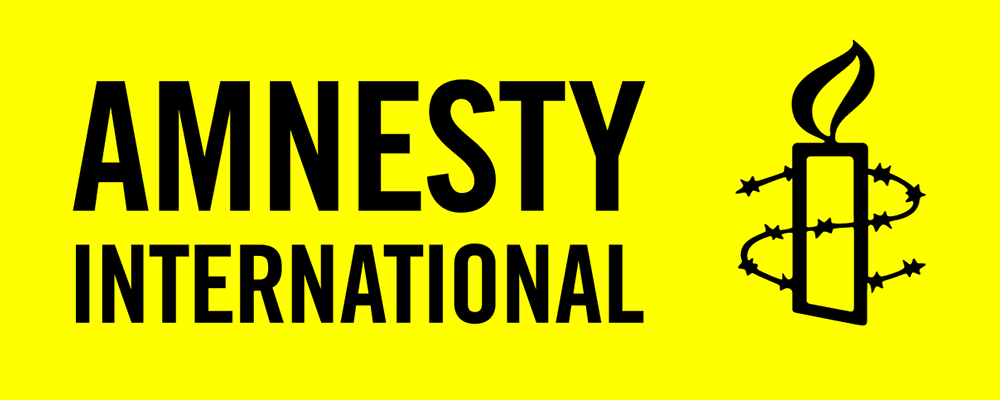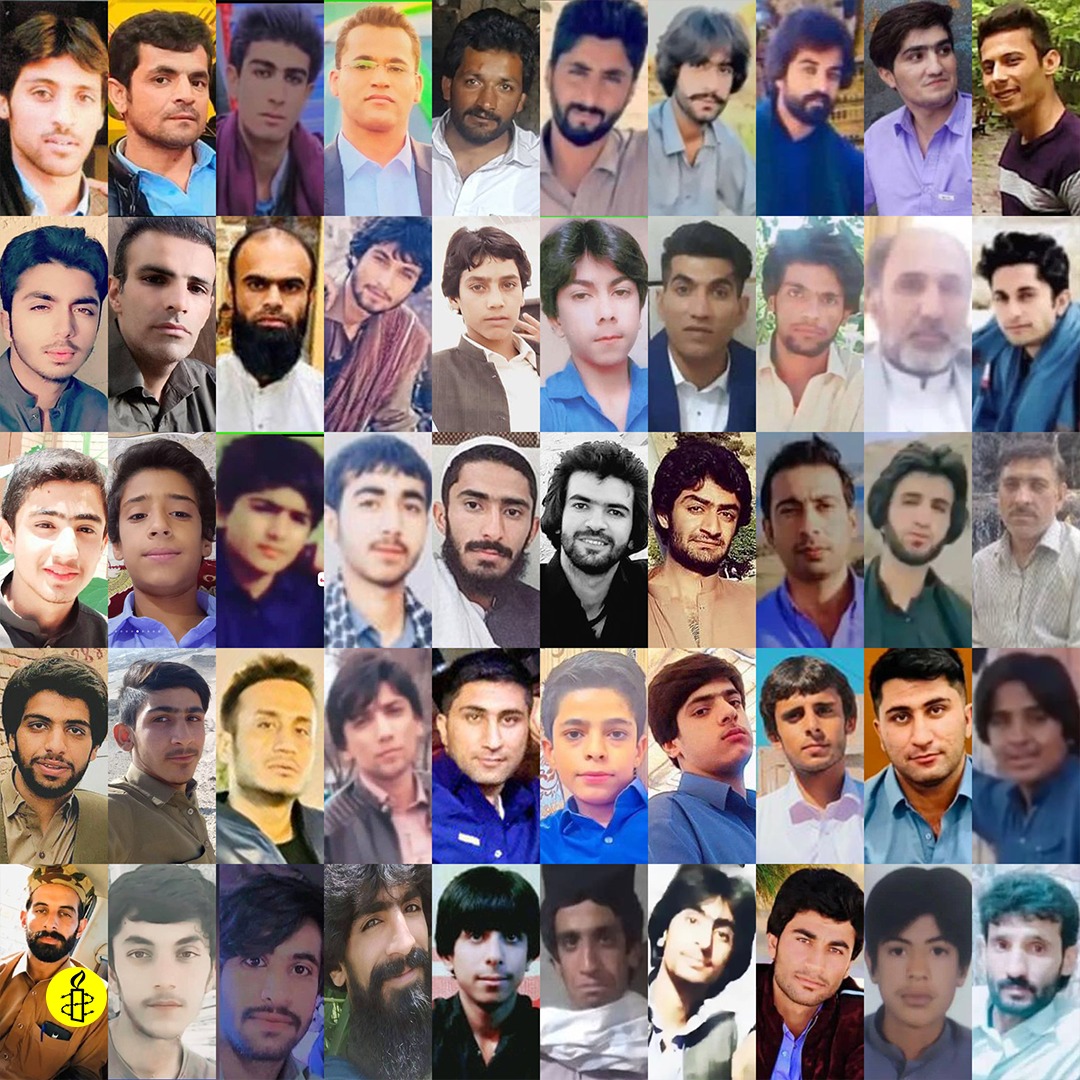Security forces unlawfully killed at least 18 protesters, bystanders and worshippers, including two children, and injured scores of others during a deadly crackdown on largely peaceful protests after Friday prayers in the city of Khash, Sistan and Baluchistan province, on 4 November. This latest deadly incident in Sistan and Baluchistan province reveals that protesters from the oppressed Baluchi minority have borne the brunt of the security forces’ particularly vicious crackdown on demonstrations.
Evidence gathered by the organisation points to a pattern that has emerged in Sistan and Baluchistan province over the past five weeks of security forces unlawfully using lethal force to ruthlessly disperse protests held after Friday prayers and deter further demonstrations from taking place. During the 4 November protests in Khash, security forces immediately and exclusively relied on live ammunition to disperse protests, showing their appalling disregard for the lives of members of the Baluchi minority, as well as international law and standards on the use of force and firearms.
Amnesty International has recorded the names of at least 100 protesters, bystanders and worshippers, including 16 children, killed by security forces in Sistan and Baluchistan province since 30 September, but the organization believes the real number is much higher and is working with Baluchi human rights groups based outside Iran, including Haalvsh, to identify those killed.
Ahead of protests expected after Friday prayers tomorrow, Amnesty International reiterates its call on the international community to take urgent action to stop further killings of protesters in Sistan and Baluchistan province and across the rest of Iran. The UN Human Rights Council must help break this cycle of systemic impunity by establishing an independent investigative and accountability mechanism to investigate crimes under international law and other serious human rights violations committed in Iran or risk yet more unlawful killings under their watch. Such a mechanism should collect, consolidate, preserve, and analyze evidence in a manner that meets general standards of admissibility in criminal proceedings and to assist in the investigation and prosecution of those suspected of criminal responsibility.
Amnesty International also renews its calls for all states to exercise universal jurisdiction to criminally investigate and prosecute Iranian officials suspected of criminal responsibility for crimes under international law.
Use of live ammunition to kill or seriously harm
According to evidence gathered from eyewitnesses and human rights activists, and confirmed by video footage reviewed by Amnesty International, on 4 November, a protest following Friday prayers outside the governor’s office in Khash, Sistan and Baluchistan province, situated near the city’s main mosque, Central Al-Khalil Mosque, turned deadly as security forces fired live ammunition at protesters, bystanders and worshippers.
Evidence gathered by Amnesty International shows that the majority of the victims identified by the organization were shot in the head, chest and torso, indicating a pattern of security forces acting with a clear intent to kill or seriously harm.
On 4 November, as people left Friday prayers in Al-Khalil Mosque and other mosques around 1pm and made their way outside the governor’s office chanting slogans, uniformed security forces standing on the rooftops of the governor’s office began firing live ammunition towards them. Simultaneously, security forces fired live ammunition at protesters and bystanders from inside pick-up trucks belonging to the security forces in the streets surrounding Al-Khalil Mosque. Some protesters dispersed into surrounding areas, while others continued to protest outside the governor’s office and a minority threw stones towards the building after being fired at by security forces. Worshippers leaving Al-Khalil Mosque who were not participating in the protests were also caught up in the crackdown.
According to the official Telegram channel of Al-Khalil Mosque and its Friday prayer leader, Molana Mohammad Osman Ghalandarzehi, security forces opened fire on peaceful protesters and worshippers. The Telegram channel also stated that security forces were shooting people in their upper bodies, information that has been corroborated through eyewitness testimonies provided to Amnesty International and videos and photographs of victims injured and killed shared on social media and with the organisation.
A statement posted on the Telegram channel on 4 November said:
“After Friday prayers…a number of worshippers who were peacefully protesting were shot by live ammunition directly fired by plain clothed and uniformed security forces. They were shot in their upper bodies, in their heads and chests, with live bullets. Children and youth make up the majority of those killed.”
In a further statement posted on the Telegram channel on 8 November, the Friday prayer leader said:
“We called on the security forces to not fire towards the people, but they ignored [our calls]. I even contacted the officials responsible and asked them to remove the security forces from around Al-Khalil Mosque. But…the security forces started shooting from four sides, and a large number of people and worshipers were killed and injured. The beloved people who died, some of them were not even participating in the protests. They were bystanders who were simply walking in the street.”
The Telegram channel has so far confirmed that at least 18 people were killed on 4 November in Khash. Amnesty International has so far identified the names of 12 victims killed and the organization is continuing its investigations in order to identify the names of other victims.
According to Amnesty International’s findings, those killed included a 14-year-old boy named Mobin Mirkazehi, who was shot in the head while he was on his way home from the mosque after Friday prayers. Another child, a 17-year-old boy with a disability named Yaser Bahadorzehi, was also shot dead and his body was found dumped near the governor’s office on 5 November.
Scores of other people, including at least three children, were also injured by live ammunition. One of the injured children – a 15-year-old boy named Mobin Moradzehi – was transferred to a hospital in Zahedan, around 150 kilometers from Khash, where he remains in a critical condition in a coma after being shot in the head by security forces.
One eyewitness told the organization that he saw several people killed and injured by live ammunition. He said: “I myself saw seven people who got shot and killed and many others injured. All the people who died got shot in their heart or head. The people who got shot in the head and heart died on the spot.”
Eyewitness testimonies are corroborated by video evidence reviewed by Amnesty International that shows security forces firing from the rooftop of the governor’s building, as well as from the streets around the mosque. Video footage shows dead and injured protesters and bystanders with horrific bloody injuries to their bodies and heads.
In one video, a young boy is filming while running for safety as the sound of automatic weapon fire can be heard in the background. According to Amnesty International’s weapons expert, the sound heard is that of live rounds being fired, although it is impossible to determine whether the live rounds come from a machine gun or another firearm.
In another video, which shows uniformed security forces in pick-up trucks holding rifles with Al-Khalil Mosque in the background, the person filming can be heard speaking in Baluchi and stating:
“Look how they are shooting…They are shooting people. They have gone to Al-Khalil Mosque and they are shooting people around the mosque area.”
The organisation has obtained information from informed sources that scores of people, including children, are in hospitals in Khash and Zahedan with critical gunshot wounds to their upper bodies. Eyewitnesses have told the organisation that some of the injured who are in hospital are under arrest and that many others have refused to seek hospital treatment with well-founded fears of arrest.
The authorities have threatened some victims’ families not to speak publicly about the deaths of their loved ones.
Sinister pattern of lethal force against Baluchi minority
The deadly crackdown in Khash is part of an increasingly violent policy against protesters in Sistan and Baluchistan province amid the popular uprising taking place across the country. Amnesty International has documented a pattern of security forces repeatedly using lethal force against protesters, bystanders and worshippers from the Baluchi ethnic minority in Sistan and Baluchistan province on a mass scale that surpasses even the horrifically high levels of violence unleashed against the population in the rest of the country.
During the “Bloody Friday” crackdown in Zahedan on 30 September 2022,[8] security forces unlawfully killed at least 80 protesters, bystanders and worshippers, including 12 children. According to information obtained by Amnesty International, in the aftermath of the mass killings, armed Revolutionary Guards and paramilitary Basij forces, both in uniforms and traditional Baluchi clothes, patrolled the streets and helicopters flew over the city. Between 1 and 4 October, at least six other men were shot dead by security forces, particularly in connection with unrest in the areas of Karimabad and Shirabad in Zahedan. In further protests that took place following Friday prayers in Zahedan on 14, 21 and 28 October 2022, security forces fired live ammunition as well as metal pellets. On 21 October 2022, security forces stationed on the rooftops of several buildings around the central mosque in Zahedan fired live ammunition towards protesters to create a climate of fear and suppress protests. On this day, at least four people sustained gunshot wounds. On 28 October 2022, security forces unlawfully killed at least two children – Omid Narouie, aged 16, and Adel Kouchzay, aged 14 – and injured many more. Those injured included an eight-year-old boy who sustained severe gunshot wounds in his stomach, and a 17-year-old boy, Amir Barahouie, who sustained trauma in his left eye due to being shot with metal pellets. Amnesty International has obtained an X-ray image showing one metal pellet lodged near the eye of Amir Barahouie and another in his cheek.
Since 30 September 2022, weekly Friday protests in other cities across Sistan and Baluchistan province have also been met with unlawful use of firearms. According to information obtained by Amnesty International including eyewitness accounts and audiovisual evidence, on 7 October 2022, security forces in Taftan repeatedly fired live ammunition into the air to suppress the mourning ceremony for a 16-year-old boy, Samer Hashemzehi, who was killed during the mass killings of 30 September 2022 in Zahedan. On 21 October 2022, security forces fired metal pellets to suppress protests in Iranshahr, causing painful injuries to multiple protesters and bystanders. On 28 October 2022, security forces in Saravan stationed agents upon a hill in the city known as Allah Akbar and from there fired live ammunition into the air. Similar patterns of security forces firing live ammunition into the air were reported during Friday protests in Iranshahr, Saravan, Rask, Sib va Sooran and Sarbaz on 4 November 2022.
Human rights activists and eyewitnesses from Khash told Amnesty International that, on 4 November 2022, security forces fired live ammunition directly towards protesters and did not deploy any other weapons. Since the eruption of protests in Iran on 16 September, Amnesty International has thoroughly documented how security forces have unlawfully used a combination of live ammunition, birdshot and other metal pellets, teargas and water cannon to disperse protests in other provinces across the country.
The security forces’ exclusive use of live ammunition in Khash on 4 November 2022 clearly demonstrates that the authorities have even less regard for the sanctity of human life in this minority populated province.
The difference in the level of violence unleashed by security forces in dispersing protests in Sistan and Baluchistan has not gone unnoticed in Iran. On 6 November 2022, the parliamentarian for Chabahar, Sistan and Baluchistan province, Moinoddin Saeedi, publicly voiced his anger and criticism of the authorities in parliament over the killing of protesters in the province. In his statement, which was cut short when his microphone was silenced, he said:
“To date, no official has apologised to the people [for the killings of protesters and worshippers in Khash and Zahedan]. The perpetrators of these bitter incidents, in whatever uniform and position they are, must be punished. The question here is why is the response [of security forces] to protesters [in Sistan and Baluchistan province] different to that in other places? … More than a third of people killed during the unrest across the country have been in killed in Baluchistan. Why?”
In explaining the particularly deadly response by security forces to protests in Sistan and Baluchistan, one eyewitness from Khash told Amnesty International: “They [ authorities] know that Persian-language and global media do not pay much attention to Baluchis. The authorities know we don’t have a voice. The situation here is very dire.”
State denial and cover up
Consistent with previous false narratives, the authorities have called the protesters “rioters” and have denied responsibility for the deaths of protesters, bystanders and worshippers in Khash.
On 4 November 2022, the governor of Khash appeared to have attempted to justify the use of lethal force by stating that “rioters” threw stones towards the governor’s building and committed acts of arson and destruction of public property.
While eyewitnesses told Amnesty International that some young protesters threw stones towards the governor’s building after security forces began firing live ammunition at demonstrators, this would not render the whole protest as non-peaceful and would not justify the use of lethal force against the protesters. The Friday prayer leader of Khash[10] also emphasized the peaceful nature of protests and Amnesty International has found no evidence that protesters, bystanders and worshippers acted in a manner that posed an imminent threat to life or serious injury that would justify the use of firearms.
State media has reported that “suspicious and unknown persons” were responsible for shooting at people and causing deaths and injuries,[11] but all of the evidence gathered by the organization points to the security forces bearing the responsibility for firing live ammunition and killing protesters, bystanders and worshippers. One eyewitness from Khash told Amnesty International that, on 4 November, he saw an individual dressed in traditional Baluchi clothes in the street firing a handgun into the air while another person in plain-clothes took photographs of him, leading him to believe that they were both security officials. The eyewitness said that the two men ran away after several protesters loudly alerted those gathered that the man firing was a security agent.
Baluchi human rights defenders and local residents have told Amnesty International that security forces in Sistan and Baluchistan province have a long track-record of carrying out abuses while wearing traditional Baluchi clothes in order to go unnoticed. The involvement of security forces in plain-clothes in crackdowns is consistent with Amnesty International’s findings in the rest of Iran, both during the ongoing crackdown and in previous ones.
Under international human rights law and standards, the use of firearms is only considered lawful in response to an imminent threat of death or serious injury, and only when less dangerous means have proven to be insufficient. Even if some protesters engage in acts of violence, law enforcement officials must ensure that peaceful protests are allowed to continue without facing undue interference or intimidation by security forces. The use of any force is only permitted as a last resort in response to violent protests, must be legal, necessary and proportionate, with law enforcement officials clearly distinguishing between those engaged in acts of violence and those who are not.


